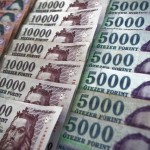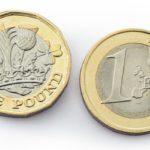 Gold futures distanced further from the strongest level in more than four months, as investors weighed the crisis in Ukraine against Fed taper outlook and decreasing physical demand from China, the largest global bullion consumer. Also fanning negative sentiment, assets in the SPDR Gold Trust, the biggest bullion-backed ETF, were unchanged yesterday for a sixth day, the longest streak holdings have held steady in more than 13 months.
Gold futures distanced further from the strongest level in more than four months, as investors weighed the crisis in Ukraine against Fed taper outlook and decreasing physical demand from China, the largest global bullion consumer. Also fanning negative sentiment, assets in the SPDR Gold Trust, the biggest bullion-backed ETF, were unchanged yesterday for a sixth day, the longest streak holdings have held steady in more than 13 months.
On the Comex division of the New York Mercantile Exchange, gold futures for settlement in April fell 0.43% to trade at $1 334.50 per troy ounce by 07:34 GMT. Prices touched a session high at $1 339.20 per troy ounce, while day’s low was touched at $1 333.80 an ounce. The precious metal touched $1 355.00 per troy ounce on March 3rd, the strongest since October 30, as tensions between Russia and Ukraine escalated.
Gold futures are 11% up this year and capped the first back-to-back monthly increase in February since the two-months through August, after a recent unrest in emerging markets, including Ukraine, and signs of slowing US growth, boosted demand for haven assets. Russian forces seized control of the southern Ukrainian Crimean peninsula, fueling concern there might be military conflict between the two countries.
“While the situation between Russia and Ukraine has improved, the uncertainty of it is still expected to lift demand for a safe haven,” said Wang Xiaoli, chief investment strategist at CITICS Futures Co., a unit of China’s biggest listed brokerage, cited by Bloomberg. “On the downside, the pace of tapering isn’t expected to change unless U.S. economic data turns really bad. Above $1,300, physical buyers just aren’t that interested.”
Chinese demand
On the Shanghai Gold Exchange, trading volumes for spot bullion of 99.99 percent purity have been lower over the past six days than the two-week high, registered on February 25th.
Higher bullion prices have hurt demand in China, which according to data by the World Gold Council released last week, overtook India as the largest global consumer last year, consuming a record 1 066 tons.
Fed stimulus outlook
Data due to be released on Friday may show US payrolls rose 150 000 in February, after increasing 113 000 in the previous month. In December, non-farm payrolls increased mere 74 000, the least since May 2012.
Federal Reserve Chair Janet Yellen said last week that central bank’s officials were “open to reconsidering” the pace of reductions in monthly bond purchase, should the economy falter, in contrast with her comments made earlier in February, that US economy has gained enough strength in order to withstand reduction of monetary stimulus.
At the same time, Fed officials will try to determine whether the weakness economy has recently demonstrated is due to temporal factors, before their next policy meeting scheduled for March 18-19th.
“Unseasonably cold weather has played some role,” Yellen said in her testimony in front of the Senate Banking Committee on Thursday. “What we need to do, and will be doing in the weeks ahead, is to try to get a firmer handle on exactly how much of that set of soft data can be explained by weather and what portion, if any, is due to softer outlook.”
The central bank announced in December that it will pare monthly bond-buying purchases by $10 billion, after which it decided on another reduction of the same size at the meeting on policy in January, underscoring that labor market indicators, which “were mixed but on balance showed further improvement”, while nation’s economic growth has “picked up in recent quarters.”
Yesterday, gold prices were supported after few downbeat reports out of the US, spurred concern over the nations economic recovery and increased demand for the precious metal as as a safe-haven.
Automatic Data Processing reported yesterday that companies operating in the US private sector added 139 000 new jobs in February, defying analysts’ projections of an increase to 158 000 and after January’s reading was revised sharply downward to 127 000 from earlier estimates of 175 000 added workers.
Also fanning negative sentiment, activity in the US sector of services grew at the weakest level since August 2010, with the corresponding PMI coming in at 51.6 in February, down from 54.0 in the previous month and confounding analysts’ expectations of a smaller decline to 53.5.
Federal Reserve will probably continue to pare stimulus by $10 billion at each policy meeting before exiting the program in December, according to a Bloomberg News survey of 41 economists, conducted on January 10th.
Assets in the SPDR Gold Trust, the biggest bullion-backed ETP, remained at 803.70 tons yesterday for a sixth day, the longest streak holdings have held steady in more than a year. In 2013, the fund has lost 41% of its holdings. A total of 553 tons has been withdrawn last year. Billionaire hedge-fund manager John Paulson who holds the biggest stake in the SPDR Gold Trust told clients at the end of last year that he wouldn’t invest more money in his gold fund because it isn’t clear when inflation will accelerate. However, a government report revealed that the owner of the largest stake in the SPDR Gold Trust, kept his holdings unchanged in the fourth quarter of 2013.




